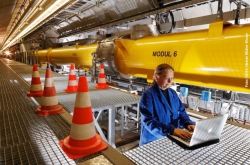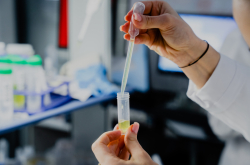The general idea of the project is to create structures that can become functional elements for micro- and optofluidics, "laboratories-on-a-chip" and microanalytical systems. Optofluidics is a science about using light to control micro-flows of fluids, and is quite promising in such fields as fast diagnostics. A good example of a microanalytical system is a gas sensor: a device that can detect particular substances in the air by reacting with them on a chemical level. A "lab-on-a-chip" is a common name for systems that consist of micro-devices with different functions.
To create such structures, the scientists plan to use femtosecond lasers. Different modes of operation allow to obtain nanostructures with different physical properties (you can read a more detailed article on femtosecond lasers here). Thanks to that, these structures can be combined with different substances to obtain composites with a wide range of application.
Still, not just any material can be used for creating nanostructure composites. Researchers from ITMO University and Jean Monnet University plan to study the use of porous quartz glass. Regular quartz is a tenacious, thermally, chemically and electrically stable material; its structure is really hard to change. Thus, it is no good for creating nanosystems, as it is resistant to the effect of lasers. Porous quartz glass, on the other hand, is great for this purpose. Its micro-pores can be filled with different substances, and the configuration of the glass can be changed with a laser.

"To do that, one has to aim the laser at a glass sample and assign it a motion program which will cure frame- or channel-shaped pores in the glass. The properties of the resulting 3d structure will depend on the laser's operation mode. In some cases, there’ll be microplasma, in others — consolidation of the substance. The use of porous glass increases the range of composites we can make, as we can control their creation process with lasers", comments Vadim Veiko, head of Department of Laser Systems and Technologies.
Thus, the international research team will study the properties of laser effects necessary for getting different nanocomposites. This will lead to development of new technologies that will be then introduced to production. The industrial partner of the research will be the "Laser Center" LLC.
"The other goal of the grant is conducting international research, the exchange of experience between the two universities. Our French colleagues will do the modeling, and we will be mostly engaged in experimental work. Then, we will collaborate on creating prototypes of equipment for producing new nanophotonics devices", shared Maksim Sergeev, teaching fellow at the Department of Laser Systems and Technologies.
As of now, research teams from ITMO University and Jean Monnet University are preparing for their first joint meeting. The financing provided by the grant is intended for three years.





